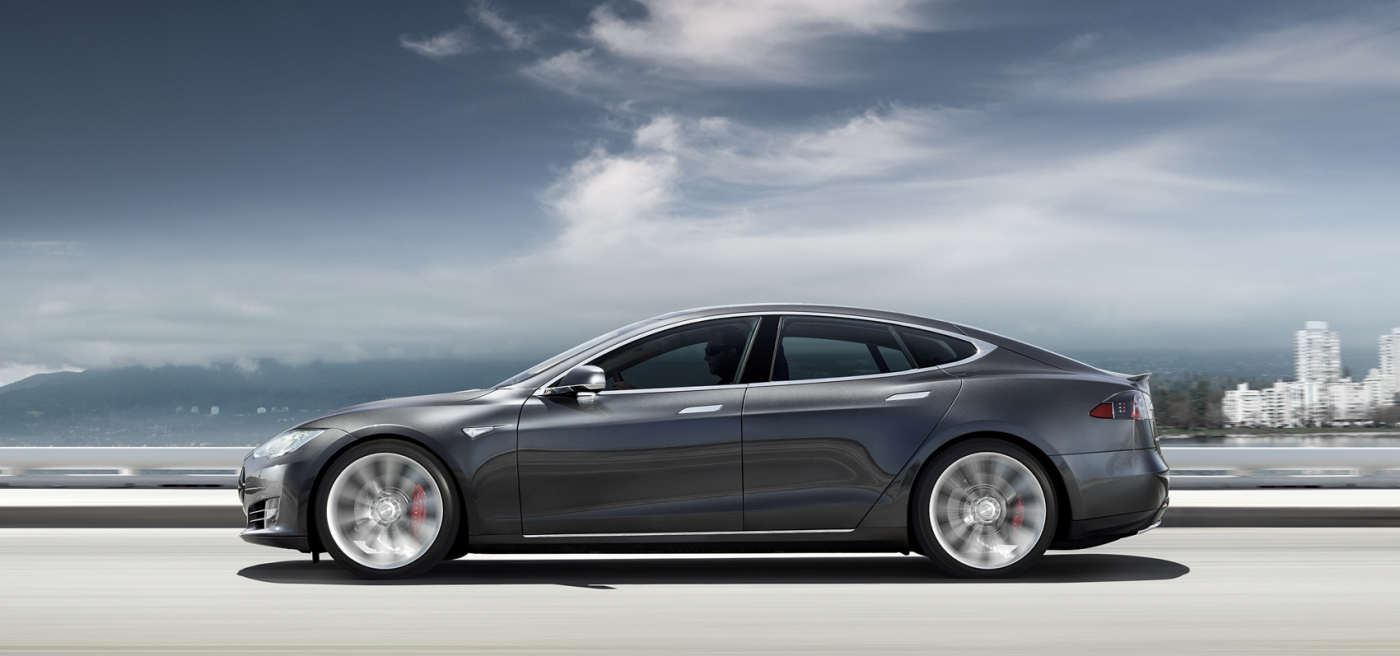I like cars. But owning one? Nah, done that, got the parking ticket.
In cities, bikes, chauffeurs, public transport and Uber are, literally, the way forward. But an environmentally sound driverless car? That goes like the wind?
One day, holding the wheel will not be necessary
When my instructor Sunny (nominative determinists take note) sat in the driver’s seat of the Tesla Model S I asked her where the key was. Even if I wasn’t to be the driver, I’d still need the key. Wouldn’t I? She smiled. It was, of course, in her pocket: lots of cars these days are keyless.
As we approached, the car had sensed her presence, unlocked and silently switched on everything that was necessary. She got in, pressed a little stick on the steering column, and we were off. Quietly. And fast. Tesla’s all electric transmission is noiseless. There are no gears to climb through, it’s straight to superfast, or as they call it at Tesla (and I’m not joking) “insane”. Zero to 60 in 2.8 seconds in the performance models.
Out on the M4, Sunny playfully fingered another little stick. “This is autopilot” she said, all innocent like. A pop up message appeared on the dashboard “do not let go of the steering wheel”, a directive that would seem about as necessary as “don’t forget to breathe”. But one day, holding the wheel will not be necessary.
Autopilot means the car is driving itself. Sensors detect the lanes, the vehicles in front, behind, at the side; cruise control adjusts your speed, up or down. It will even change lanes. The driver can override everything, but pretty soon you grasp that this car is smarter than you. It will park itself having found it’s own space.

The Tesla Model S dashboard
When Sunny gave me the keys, I was tempted to break the law by driving at top speed for several miles up the M40, hands-off the wheel. Obviously I didn’t, but what I can tell you is that autopilot cuts out at 70 mph, and if you haven’t touched the wheel for three minutes an alarm sounds. Similarly, just outside Oxford in a traffic jam, it would have been unlawful for me to use the very large computer screen on the central console to check my emails, read The Guardian, or watch kittens on the internet.
In the movie Grimsby one of the few (very few) funny moments is when Sacha Baron Cohen is watching a football match on his Tesla screen and cheers a goal just as the car is crashing into the Thames. The screensize equates to a desk computer, which inside a car means huge. In addition to those internet kittens, it controls the entire vehicle. You are, in effect, driving a state of the art computer on wheels. And one day it will be driving you.
You are, in effect, driving a state of the art computer on wheels. And one day it will be driving you
In the future, being asleep at the wheel may no longer be a crime, and most cars will be electric. Currently, hybrids have both rechargeable batteries plus an engine, to be refilled at garages everywhere, which is where the sparkle of the all-electric car currently dims. The range is now 330 miles, but eventually the battery will go flat. There are an increasing number of roadside electric chargers, but they take an age. At home, plugged in like a kettle, it’s even longer.
Tesla owners have faster home chargers, and exclusive use of about 100 Superchargers around the country (I fully recharged the car in 53 minutes at one motorway service area). But it’s not enough. Yet.
As darkness fell, I realized I had no idea where the light switch was. The headlights had come on automatically, which is common to many cars, but then they dipped and went back to main beam instinctively, sensing oncoming vehicles, or even rear lights up ahead.

Tesla Model S
What kind of sorcery is this, which consigns light switches to the dustbin of history along with exhaust pipes, handbrakes, gears, and kicking tyres? (The computer constantly monitors tyre pressure).
To ensure my weekend was as environmentally sound as possible, I drove the car to The Old Swan & Minster Mill in Minster Lovell where the Cotswolds become as dinky as it’s possible to get: buttery yellow stone walls, thatched roof, wonky floors and roaring fires. And yet: in the car park there’s a plug-in charger for the car.
I ate beef and seasonal vegetables from the local farms, and in the morning yoghurt made next door while the car had charged overnight. Look at me: organic and sustainable. Mr. Green.
To further my environmental credentials I discovered that this is the only hotel in the UK with an Archimedes Screw, a cast iron giant of a thing revolving outside in the river, generating electricity for the hotel and the national grid. It’s enormous, like a post-modern installation for Tate Modern’s Turbine Hall. During my visit the waters were running fast and high, enhancing the device’s aesthetic appeal with sheer muscular power, spinning and roaring to produce kilowatts of energy.
Cleanly speeding back along the M4, both hands on the wheel, a wag called to suggest that driverless technology would take off once people realized they could go drinking down the pub and driven home by autopilot. I suggested that hanging on to a steering wheel might be rather contrary to the spirit of technological advancement that lies on the road ahead. C
Teslamotors.com






